Allium (onion) root tip L.S. Under Microscope
Image Gallery
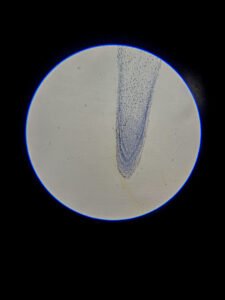
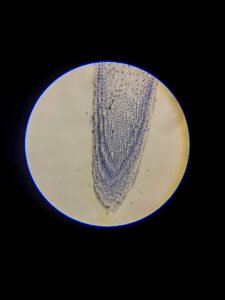

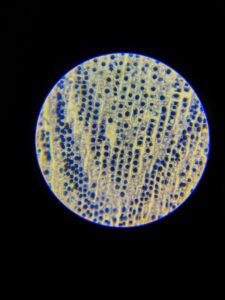


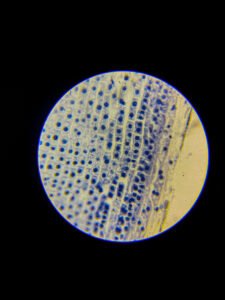
Videos

Description
Allium (onion) root tip longitudinal section (L.S.) is a classic microscopic slide used to study various stages of mitotic cell division.
Under a compound microscope, the root tip appears as an elongated structure with a clearly visible root cap at one end and a zone of actively dividing cells (meristematic region) just behind it.
The root cap consists of small, densely packed cells that protect the root as it grows through the soil. These cells stain darker and may appear slightly dome-shaped at the tip.
Just above the root cap lies the meristematic zone, where cells are small, nearly square or rectangular, with prominent nuclei and dense cytoplasm. These cells are arranged in rows and are actively dividing.
Different mitotic stages—prophase, metaphase, anaphase, and telophase—can be observed in this region, depending on the preparation and staining. Cells in interphase (non-dividing stage) are also visible, appearing with a distinct nucleus and nucleolus.
The cytoplasm often appears granular due to dense organelles, and chromosomes can be seen as darkly stained thread-like or rod-shaped structures during mitosis.
Further up the root tip, cells begin to elongate and differentiate, marking the transition from the zone of cell division to the zone of elongation.
Staining (usually with acetocarmine or safranin) enhances the contrast, making chromosomes and nuclei more visible, aiding in the identification of mitotic phases.
Overall, the Allium root tip L.S. provides a clear and organized view of plant cell structure and mitosis under the microscope, making it a key specimen in cytology studies.
Equipment
Compound Microscope
Magnification
40x, 100x, 400x
Staining Technique
Sourav Pan (2025). Allium (onion) root tip L.S. Under Microscope. Biology Notes Online. Retrieved 02/12/2025 from https://biologynotesonline.com/community-image/allium-onion-root-tip-l-s-under-microscope/
Helpful: 0%
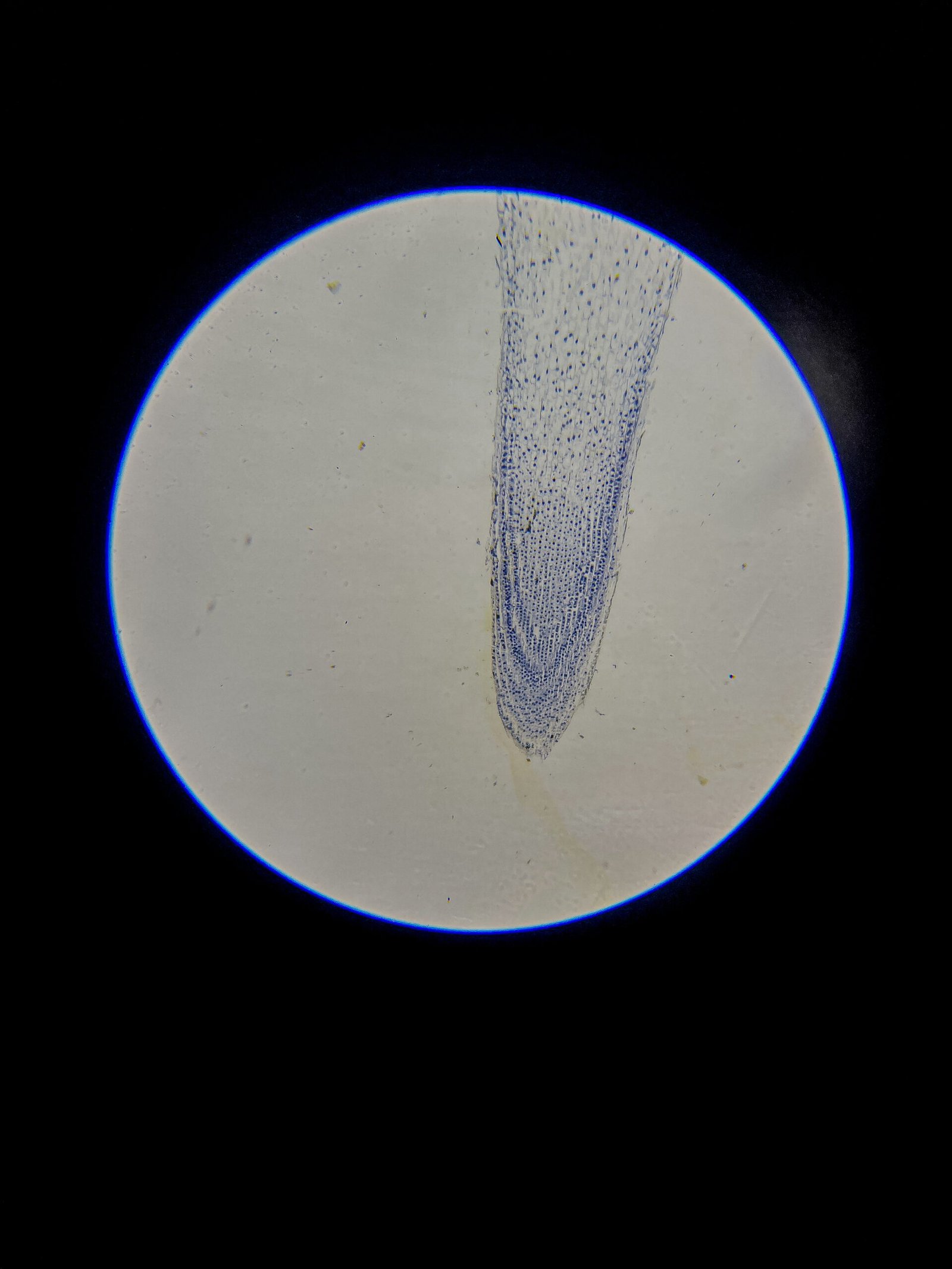


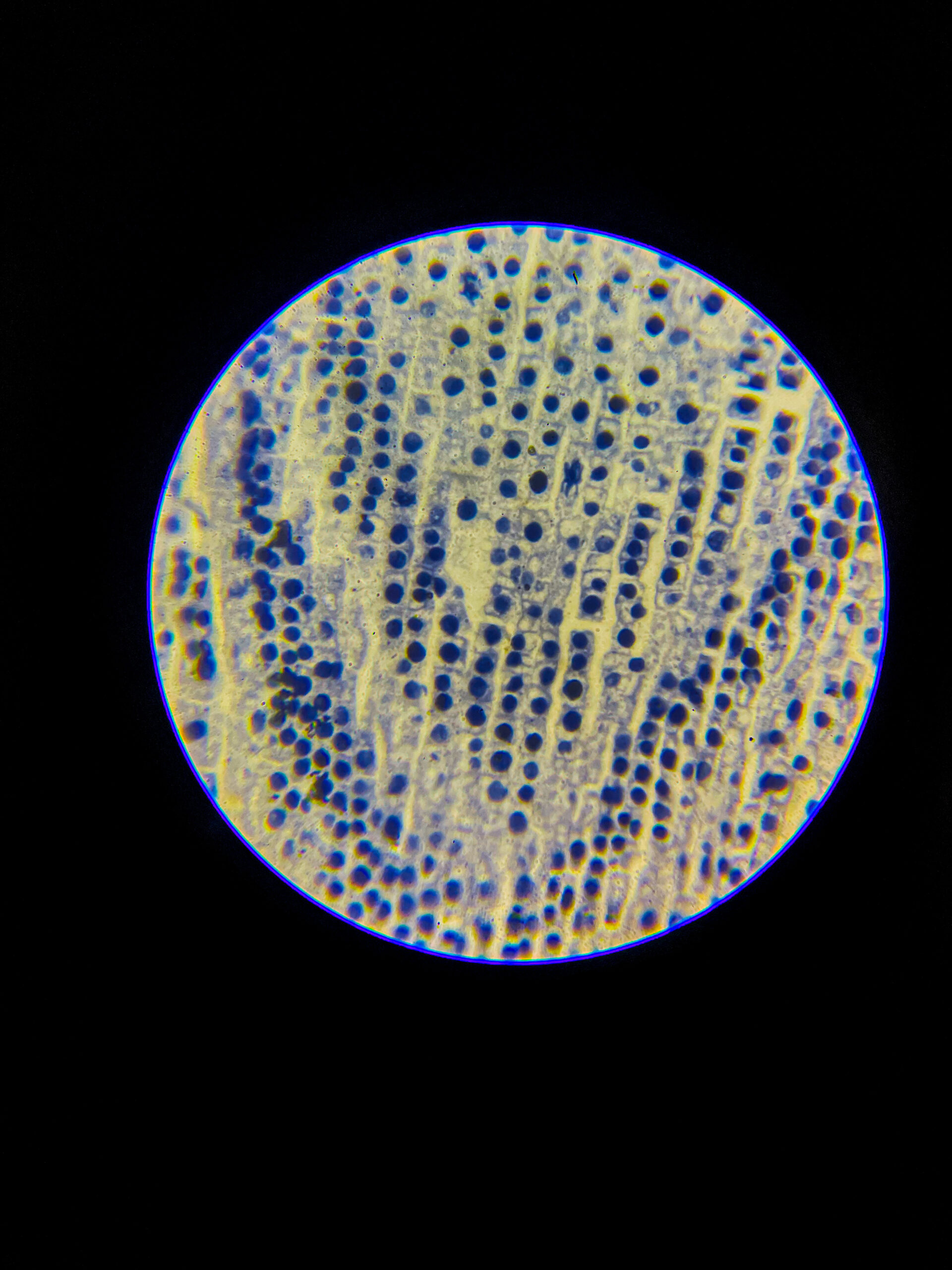
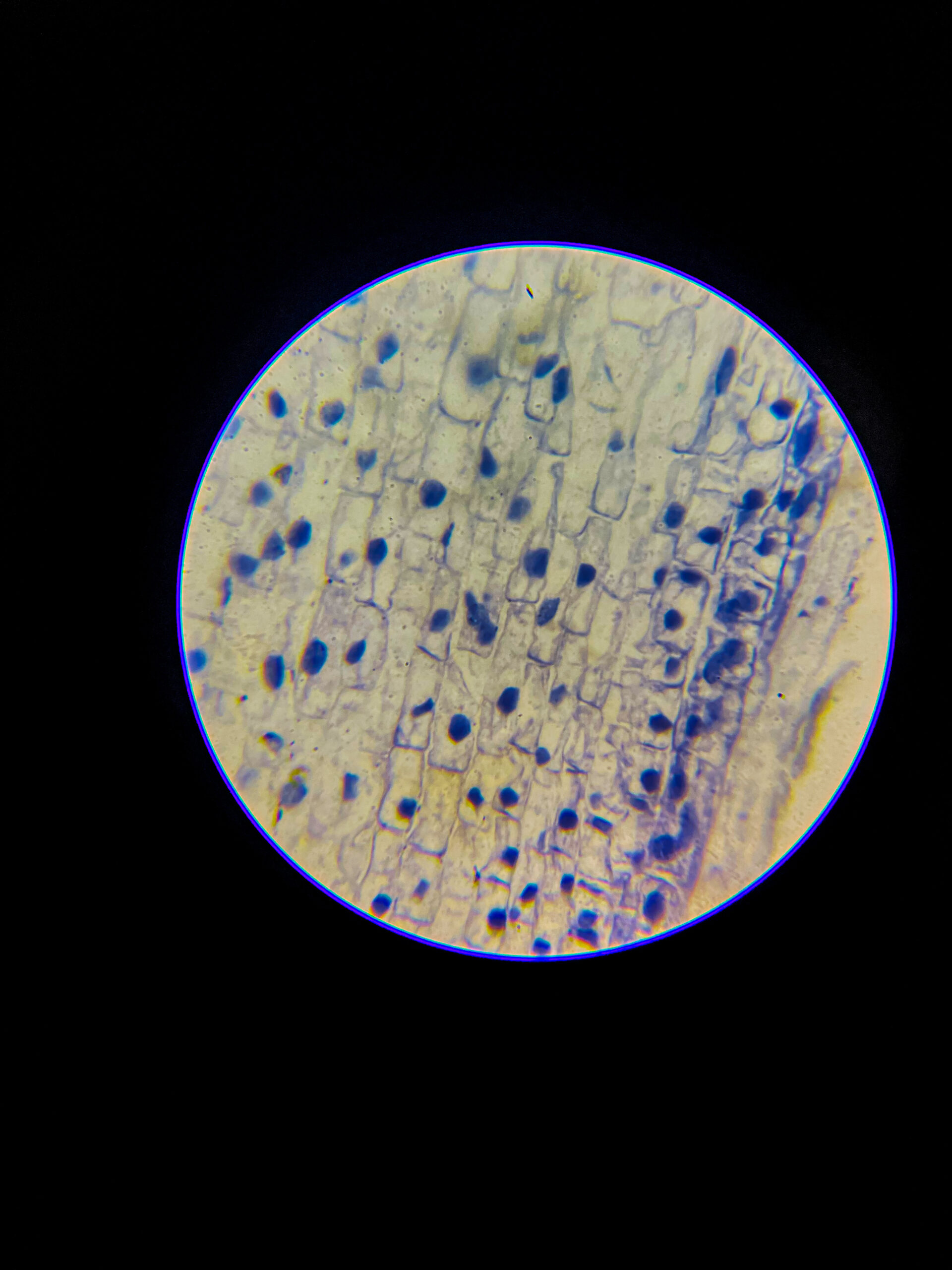


- Text Highlighting: Select any text in the post content to highlight it
- Text Annotation: Select text and add comments with annotations
- Comment Management: Edit or delete your own comments
- Highlight Management: Remove your own highlights
How to use: Simply select any text in the post content above, and you'll see annotation options. Login here or create an account to get started.